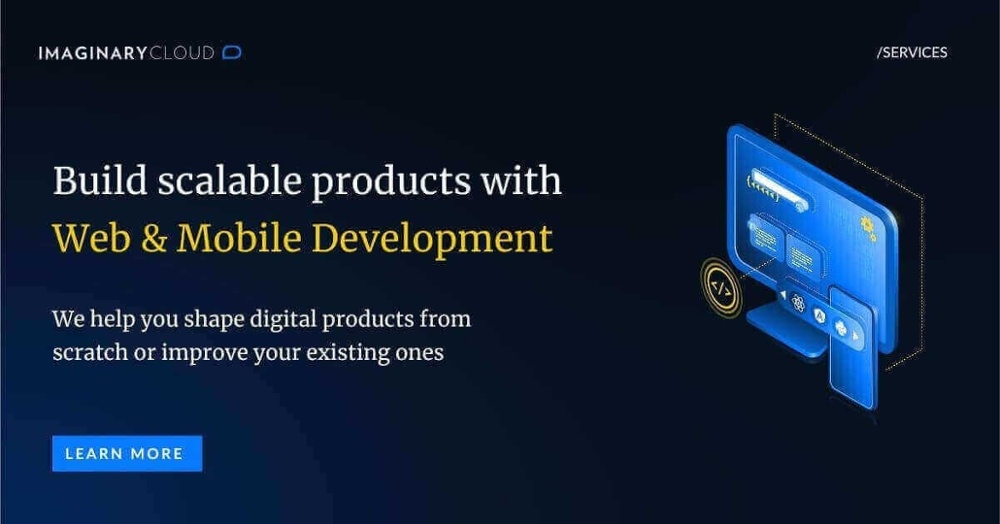Developing digital products with a good user experience (UX) is becoming a must, both in B2C and B2B business models. As part of product design, digital teams need to understand exactly which problems a product is supposed to solve. User-centered design is a discipline that focuses on the users and their needs, and many companies worldwide have started to develop their own approaches and methodologies to put this into practice.
This article explores the differences between our Product Design Process vs Google Design Sprint, two methods to achieve a great user experience and a seamless digital product that meets users' needs. The Product Design Process focuses on thorough user and market research before building a product, and the Google Design Sprint is a fast, 5-day intense method to accelerate decision making. Let's break the differences between the two processes.
Table of contents
What is Product Design?
➤ The importance of Product Design in business
What is the Product Design Process?
➤ The 4 phases of the Product Design Process
What is Design Sprint?
➤ What is the purpose of a Design Sprint?
What is Google Design Sprint?
➤ The 5 phases of Google Design Sprint
Product Design Process vs Google Design Sprint: main differences
What is Product Design?
The Interaction Design Foundation defines product design as “the process designers use to blend user needs with business goals to help brands make consistently successful products”.
An example of product design is determining how an app, for instance, Uber, should solve a problem. In this case, the problem is the need to have convenient and fast transportation at your service. Uber solves this problem by providing an app where the user taps a button on their phone to request a driver. This solution is then combined with business goals, such as pricing models to help determine pricing levels to hit sustainable revenue numbers based on supply and demand.
As such, a product designer makes the bridge between how a product should meet users' needs by ensuring a great user experience and considering business goals.
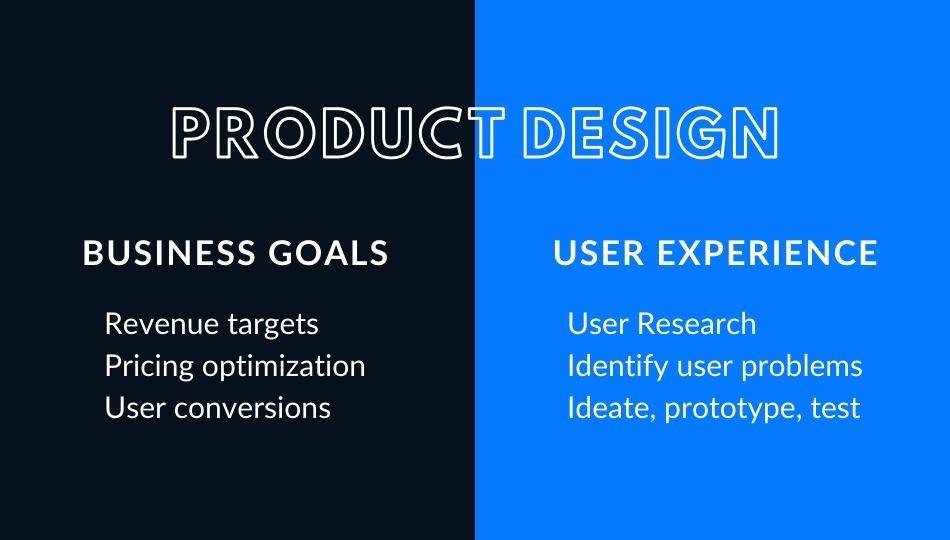
The importance of Product Design in business
Product design determines whether a product is successful or unsuccessful in business circles, market shares, and the company's reputation. Hence, in business, Product Design has numerous valuable factors:
a) Determines the success of a product
A company's success is dependent on the performance of the product or service it delivers. A good product has the following common features:
- Utility - Product design ensures that the product is useful per consumer expectations and guarantees consistency and good performance throughout the product's lifecycle;
- Good aesthetics - Product design ensures aesthetic designs in order to spark positive emotions and increase the chances of using the product;
- Profitability - Product design should be economically sound in order to provide value to customers while also ensuring the organization's long-term sustainability;
- Uniqueness - Through methods like research and benchmarking, product design provides solutions that make the product stand out from the crowd.
b) Provides customer satisfaction
Consumers' first impression of the product's visual layouts intrinsically affects how they will proceed and form an opinion. Hence, if the design doesn't match a pleasant look and feel, it will drain users' emotions to a negative side and may lead to never using the product/service again. A balance between aesthetic and functionality is key to obtaining a successful and satisfying product.
c) Helps increase sales
In the long term, it is necessary to adapt to the market demands. Creating innovative and original solutions will set you up right to reach a broader consumer base. Because having users’ as the main focus will translate to the success of a product or service, and it will almost surely have an impact on sales and the company's investment returns.
What is the Product Design Process?
As we have already covered in our blog post about The Twelve Steps to create a Successful Product, the Product Design Process (PDP) is a multi-disciplinary and user-centered design process created by Imaginary Cloud. It is a collection of existing techniques, matured over time by the industry and chained together to ensure that the product design team's workflow is as efficient as possible. This process is nowadays taught at some of the most prestigious design universities, helping design students and professionals alike develop exceptional products with a swift go-to-market approach.
The Product Design Process (PDP) is a multi-disciplinary and user-centered design process created by Imaginary Cloud. It is a collection of existing techniques, matured over time by the industry and chained together to ensure that the product design team's workflow is as efficient as possible.
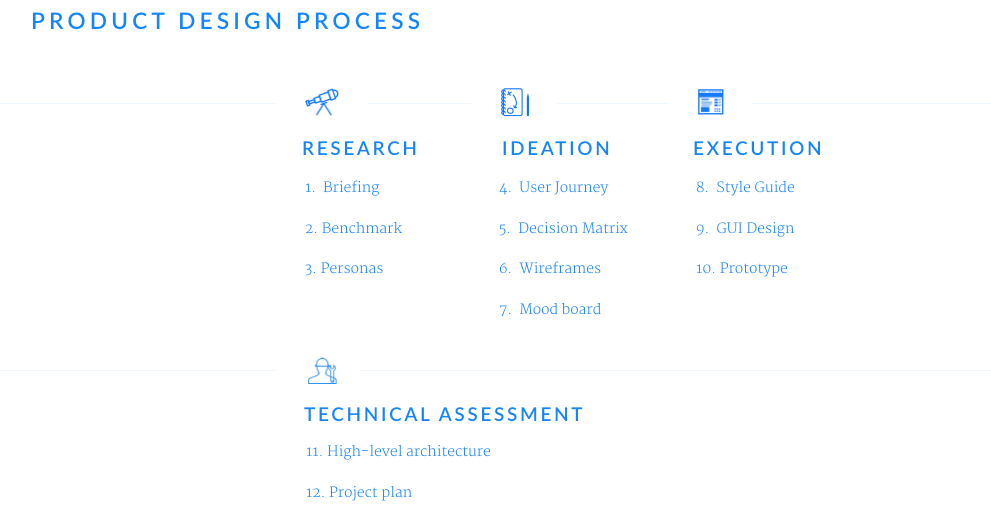
The 4 phases of the Product Design Process
The PDP structure contemplates four different phases - research, ideation, execution, and technical assessment - that are then split into twelve steps. These steps are all part of the main framework, providing guidelines on how to design a product.
We encourage you to take a better look at our previous article before we jump into how it differs from Google Design Sprint. But here’s a brief outlook on the 4 phases:
Research
Goal: To ensure that no decision is made based on vague assumptions; identification of the main aspects of the business model and user needs. It contemplates 3 steps:
- Briefing
- User Research
- Design Benchmark
Ideation
Goal: To formulate the concept of the product based on the user's needs and the business model. It contemplates 4 steps:
4. User Journey
5. Decision Matrix
6. Wireframes
7. Mood Board
Execution
Goal: To create a physical representation of the concept that has been defined up to this point. It contemplates 3 steps:
8. Style Guide
9. Graphic User Interface (GUI) Design
10. Prototype
Technical assessment
Goal: To guarantee that all requirements and ideas generated are realistic to implement.
11. High-level Architecture
12. Project Plan
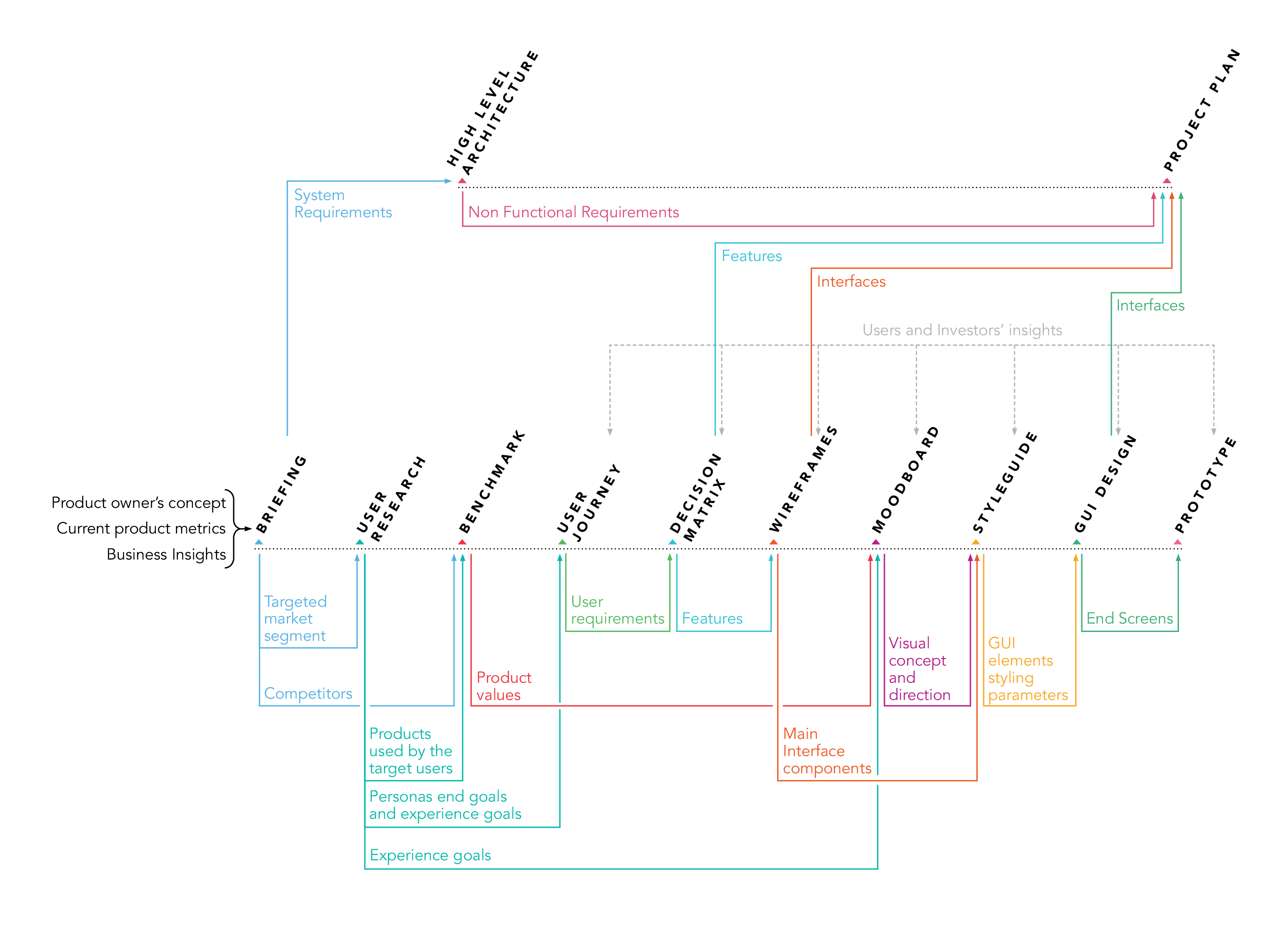
Read also:
- Participatory Design: bringing users to the design process
- Web Design and Development: what's the difference?
- Product Design Process vs Google Design Sprint
What is a Design Sprint?
The Desing Sprint is a step-by-step one-week process that starts with mapping out a challenge to having a high-fidelity prototype or testable product at the end of the week. The Design Sprint has been used by millions of companies around the world in order to test big ideas fast, and compress potentially months of work into only a few days.
In four to five days, the Design Sprint aims to help you:
- Understand - Map out the problem and pick an important area to focus on;
- Sketch - Sketch out competing solutions;
- Decide - Make decisions and turn your ideas into a testable hypothesis;
- Prototype - Put together a realistic prototype;
- Validate - Obtain feedback from real live users.
We’ll break down each one of these further ahead.
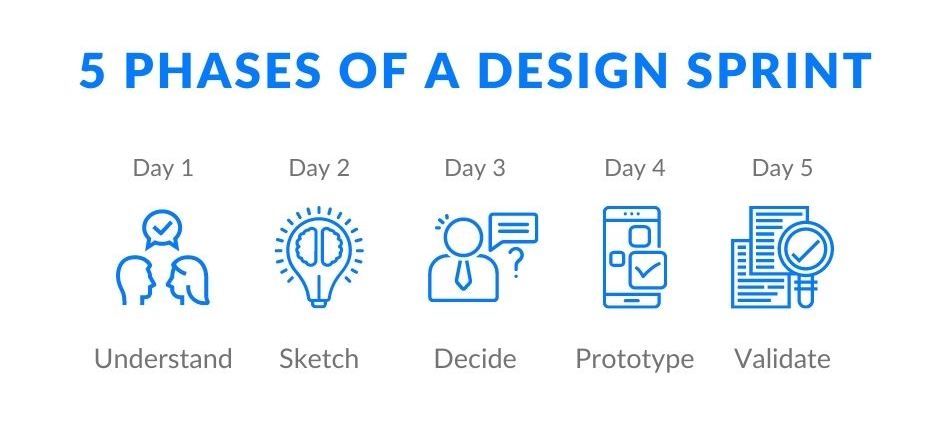
What is the purpose of a Design Sprint?
Within the week, the main purpose of the design sprint will be to:
-
Prioritise user feedback - The aim is to create a working prototype that users can test within a week to incorporate feedback into the beginning of the product.
-
Accelerate the decision-making process - Design sprints seek to jumpstart decision-making by gathering members of all teams in the same room and designating one person as the official "decider." This method encourages communication and teamwork.
-
Improve team collaboration - Design sprints change how teams collaborate by putting together fast ideation, iteration, and decision-making first in order to keep the process floating. Teams can use the collaboration skills learned during design sprints and help team members work more cohesively together.
What is the Google Design Sprint?
Google Design Sprint was developed at GV - a venture capital that provides seed, venture, and growth stage funding to technology companies - and can be described as the "best of" collection of business strategy, innovation, behavior science, design thinking, and other concepts packaged into a battle-tested approach that any team can use.
Put simply, Design Sprint was developed to make the design process fast and stil offer valuable insights. It essentially focuses on getting insights into critical business questions within a very short timeframe.
The 5 phases of Google Design Sprint
This process takes the Design Thinking methodology as a base, although it attempts to gain insights via fast solutions, prototype development, and user testing. The Design Spring is a five-phase process, where each phase takes approximately one to 8 hours to perform.
Let’s break down the phases:
1. Understand
In this phase, the goal is to create shared knowledge to spot a business problem. Here, it is important to bring the whole team together and unpack their knowledge about the product. There are lightning talks where everyone has 10-15 minutes to share their knowledge being the typical topics 1) business goals, 2) insights from user research, 3) an overview of competitive products, and 4) technical opportunities.
Other common topics discussed during the Understand Day are demonstrations of solutions that are already available, a detailed walkthrough of any proposed solution, creating user journeys, and performing user research.
2. Sketch
The Sketch Day is an individual effort. Everyone has to come up with a detailed solution to the problem. This phase is usually performed on paper because it is quick and takes no time to make changes. It also enables the whole team to participate even if they don't know any wireframing tools.
It might be a better strategy for particularly complex, large-scale problem-solving to break up the problem into manageable chunks and assign people a chunk rather than the whole problem.
The sketch phase aims to get as many ideas down as possible.
3. Decide
As you might have guessed by now, Decide Day is all about deciding on which idea you will take to the Prototype phase. It is also about working out how your solutions might conflict with your objectives and abilities. You can start by quickly listing any assumptions that you are making about the budget, users, technology capacity, and business drivers.
Finally, it is time to review each idea and look at the conflicts it generates - ideas that are not feasible should be removed so that we are left with the best ones to create a storyboard. This storyboard should show each interaction with the user in a step-by-step process, and these will be your specification for your prototype.
4. Prototype
On Prototype Day, you have a single day to create a prototype that your users can test. In this phase, you can use whatever materials or tools you're comfortable with: cardboard, glue, and colors to build your prototype physically or sketch it digitally.
5. Validate
You validate your idea on day 4 or 5. Here, you bring in a group of end-users to test your prototype. The entire team must observe how users interact with the product either directly or by watching the test recordings. Another activity that will help you validate your design is to bring in experts and manageable stakeholders to review your idea.
The Design Sprint is a linear process, but you're strongly encouraged to make revisions based on your first sprint and reiterate the prototype to validate the phases.
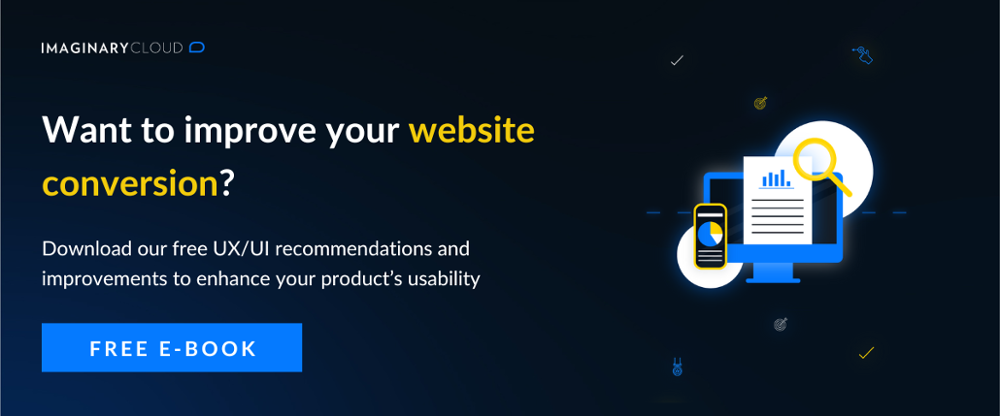
Product Design Process vs Google Design Sprint: main differences
There is no right or wrong approach when it comes to choosing between the Product Design Process vs Google Design Sprint. However, it is important to mention that while PDP is more suitable to create a product from scratch or re-think an existing one, GDS is used for an existing and already in place product.
For instance, GSD is used in Slack, as they improve the product slowly by sprints. A PDP applied to Slack would mean a completely new approach and solution - which is not the most suitable.
Having a thorough process with beforehand research done, like PDP, helps save on costs spent on product design and development, enables the planning of realistic schedules, and leads to a higher quality product.
A Design Sprint is the best option if the problem is known, the team has been dealing with it for a long time, or the team knows what the problem is from previous experience. But if there are no specific options for action or if the target group is still unknown, a Design Sprint will not bring any useful results. The foundations must first be created in order to release teams from their vacuum. This is where the Product Design Process can show its full potential and value.
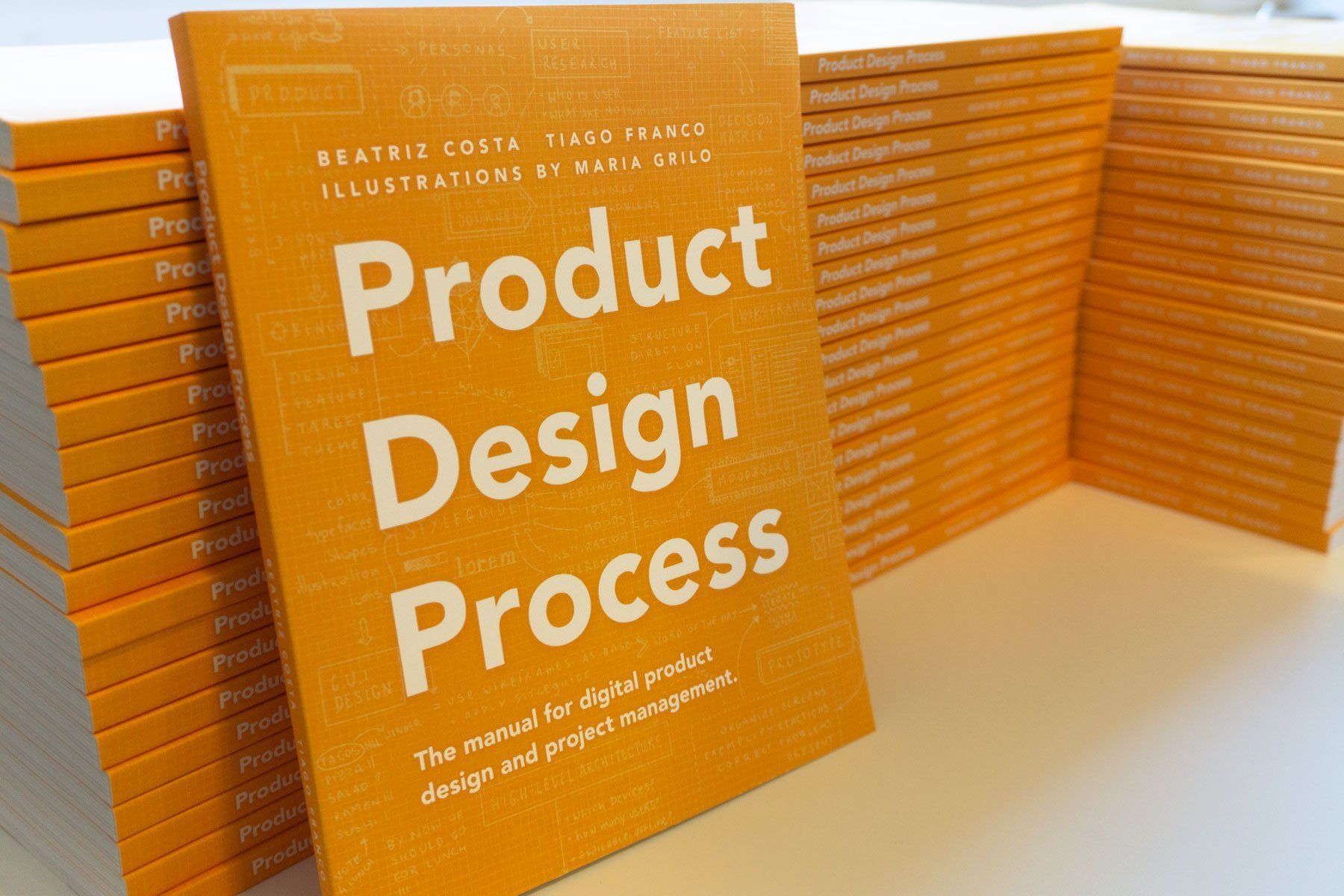


It is important to mention that every time a new idea is prototyped on top of scuttled requirements, a great deal of what was already done will have to be redesigned. Forcing a complete rework will result in a product that looks patched together rather than built as a whole piece. That is why at Imaginary Clood, we focus on breaking down the process into several, logical phases and actions that follow a sequence. The PDP focuses on consistently providing exceptional UX/UI Design, improving user experience, enhancing conversions, and growing businesses' value while balancing costs and benefits on a rapid market launch.
Are you looking to implement a logical design process into your development process or enhance your digital product performance? Take a look at our book above - Product Design Process - a comprehensive guide that provides practical examples and shows exactly what you should have by the end of each step.
